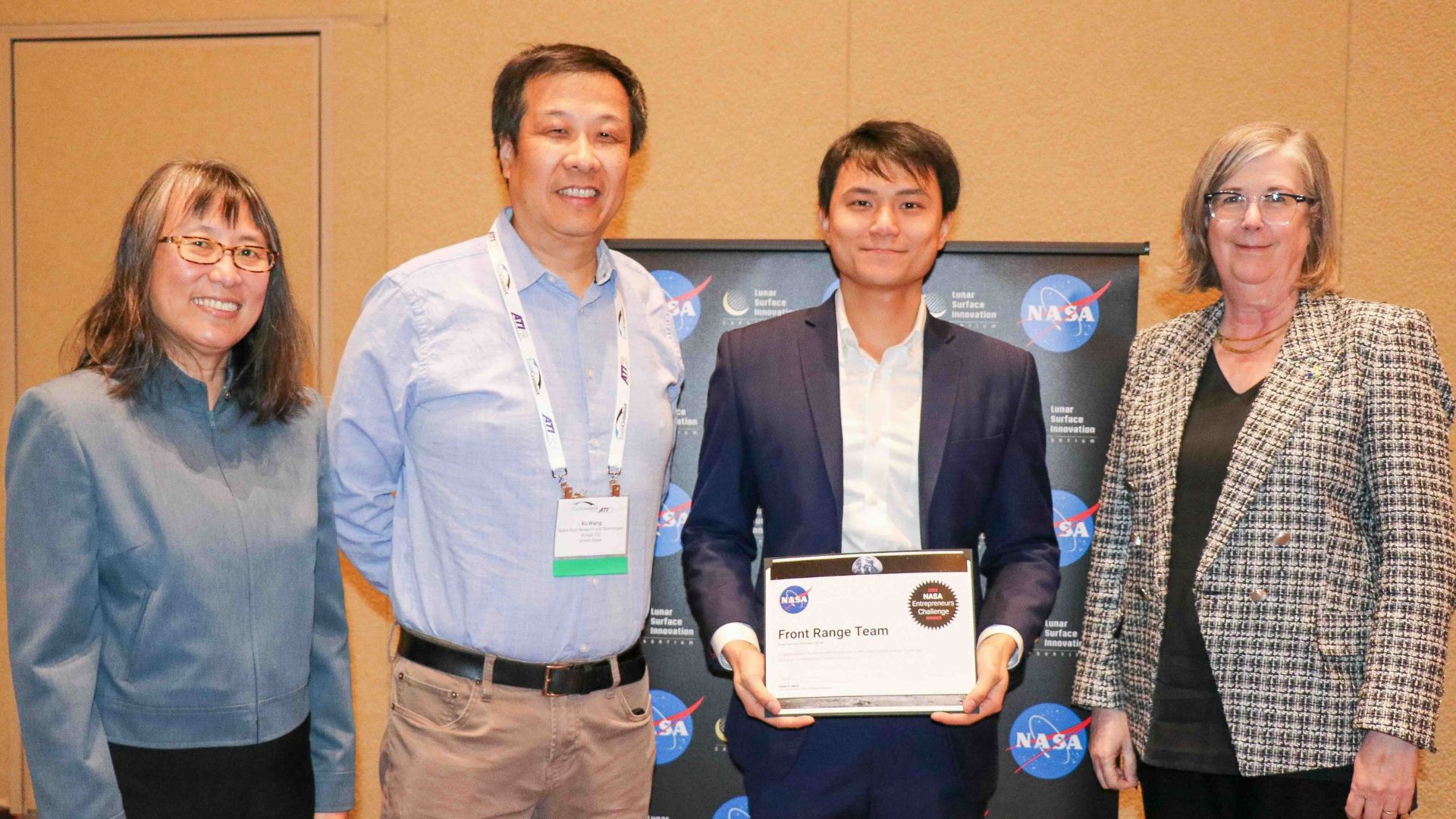
When humans first ventured into space and endeavored to land on the moon, the question most often asked of NASA astronauts was how they relieved themselves in space. In fact, it was such a phenomenon that the screenwriters of the 1995 movie Apollo 13 incorporated it into a scene in which Gemini and Apollo astronaut Jim Lovell (played by Tom Hanks), receives the question during a NASA tour and jokingly responds that “it’s a highly technical process of cranking down the window and looking for a gas station.”
Although meant in jest, the notion may actually hold a kernel of truth for future missions to the moon. Whether crewed or uncrewed, lunar vehicles driving around on the surface of the moon will need somewhere to gas up and squeegee the windows, so to speak. In short, they will need a service station.
Now, a team of researchers from the Laboratory for Atmospheric and Space Physics (LASP) at the University of Colorado (CU) Boulder and the Colorado School of Mines has developed an innovative, award-winning idea for a lunar service station where lunar rovers and mining machines could charge their batteries and clean the dust off their surfaces. The proposed design, called the Lunar Anti-Dust Microgrid, uses a novel electron beam dust mitigation technology that blasts an electron beam to charge and repel dust off surfaces.
In December, the Front Range team’s submission was named one of eight grand-prize winners out of 69 teams in the 2023 NASA Entrepreneurs Challenge. The NASA Entrepreneurs Challenge is funded by NASA’s Science Mission Directorate to develop innovative technologies to advance NASA’s science goals.
“This would give vehicles and astronauts a place to recharge and clean the dust from their surfaces as they move through a car wash-like electron beam system, enabling vehicles and spacesuits to survive longer in the harsh lunar environment,” said Front Range team member Xu Wang, a LASP researcher who studies lunar dust and how to mitigate it. Wang is co-founder, along with LASP researcher and professor of physics Mihaly Horanyi, of a start-up company called Space Dust Research & Technologies (SDRT). “This technology is developed on our decades-long lunar dust science studies,” said Horanyi.
Wang and Horanyi have filed a patent application to protect the idea, as well as an invention disclosure with the Research and Innovation Office’s Venture Partners at CU Boulder, which helps CU researchers translate their groundbreaking discoveries into new solutions, businesses, and partnerships. SDRT now has an exclusive option to license CU’s rights in the patent pending on the dust mitigation technology, said Amy Dodenhoff, Assistant Director of Licensing and Director of the Lab Venture Challenge at Venture Partners at CU Boulder.
“We love hearing about the technologies developed in CU’s labs, and our ecosystem is built to support inventors and entrepreneurs on campus,” said Dodenhoff. “This prize is a great accomplishment for SDRT, and we look forward to their continued success.”
This latest NASA Entrepreneurs Challenge sought solutions in areas involving climate science and lunar payloads. The Front Range team proposed to test the Lunar Anti-Dust Microgrid as a payload on a future Commercial Lunar Payload Services lander, and the prize might help that happen. The Round 2 win came with an $85,000 award, which, along with the team’s Round 1 prize of $16,000, will help fund the development of a prototype, said Wang.
The team members from the Colorado School of Mines are two graduate students, Kenneth Liang and Chris Tolton, founders of a start-up company called Orbital Mining Corp., which designed the microgrid that would allow lunar rovers to recharge on the moon.
Wang and Horanyi are also affiliated with the Institute for Modeling Plasma, Atmospheres, and Cosmic Dust (IMPACT), an interdisciplinary program investigating the physical processes governing dusty plasmas including issues necessary for ensuring human safety and long-term usability of mechanical and optical devices on airless bodies. IMPACT is a collaboration between LASP, the Departments of Physics and Aerospace Engineering Sciences at CU Boulder, the Colorado School of Mines, and various international partners.
By Sara Pratt, Senior Communications Specialist
Founded a decade before NASA, the Laboratory for Atmospheric and Space Physics at the University of Colorado Boulder is on a mission to transform human understanding of the cosmos by pioneering new technologies and approaches to space science. LASP is the only academic research institute in the world to have sent instruments to every planet in our solar system. LASP began celebrating its 75th anniversary in April 2023.



